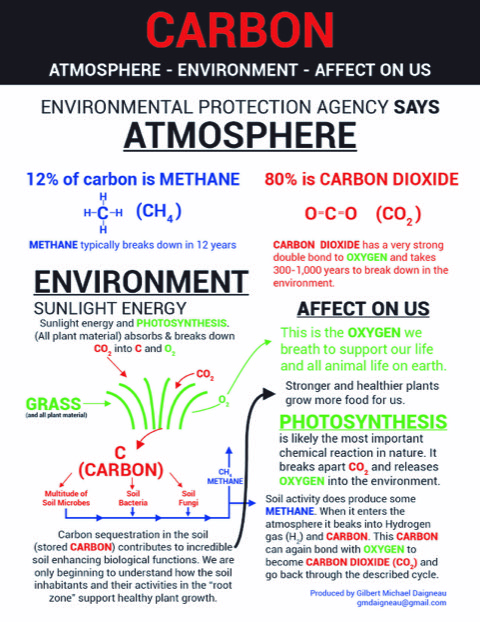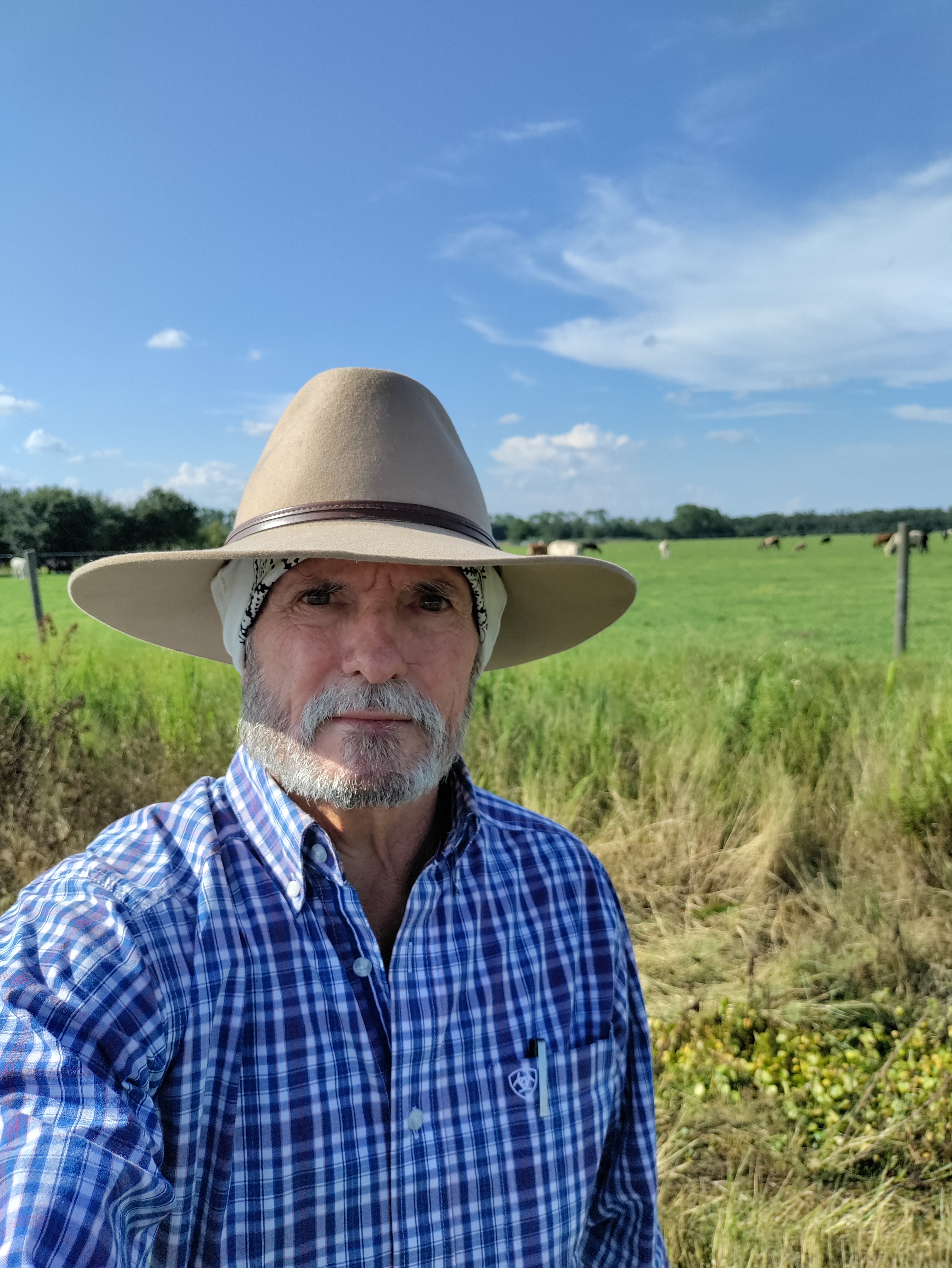
I am Gilbert Michael Daigneau and I am a farmer. While studying nutrition in graduate school in the College of Agriculture at the University of Florida I learned many facts about food, food production and agriculture. I have witnessed a continued distortion of facts about food to the point where false accusations are being made to support and perpetuate a particular agenda.
If you are like me you enjoy eating a steak, a roast or a hamburger without being made to feel bad about it. There is a well-organized, well-funded and well-orchestrated effort to demonize beef and replace it with synthetic laboratory-produced beef substitute. It is being done in an effort to characterize beef production as a carbon producer and contributor to global warming. Is this true?
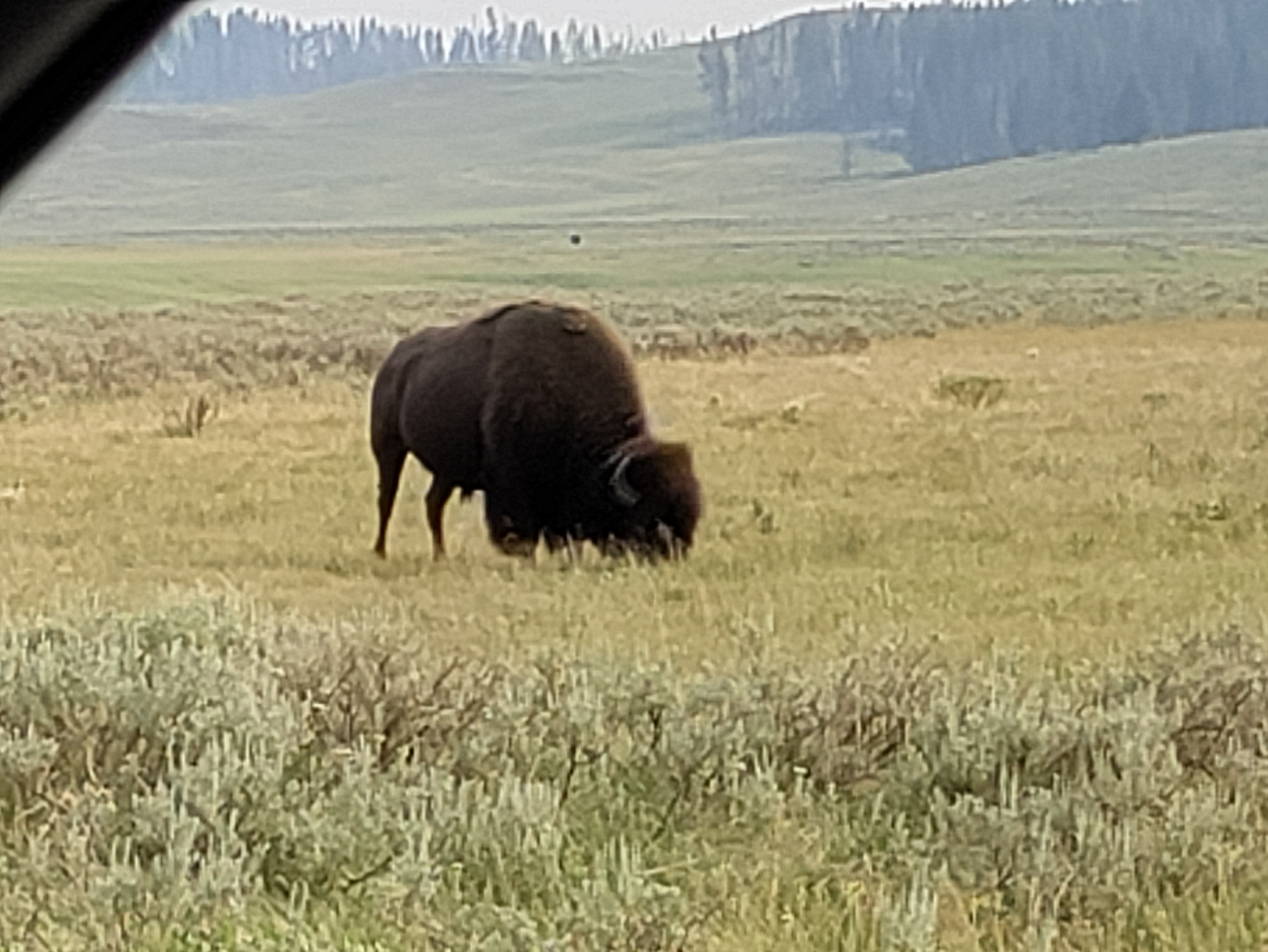
This is entirely true. Cattle produce the greenhouse gas methane, but they are not alone as a carbon producer. Methane is a byproduct of digestion of cows and all other animals that live off grass like deer, moose, elk, bison, goats, sheep, etc.
Let me describe to you the process that is never explained. Cattle ranches are typically primarily grasslands and wooded areas usually including wetlands that clean, filter, store our drinking water and recharge our underground aquifers. In the photosynthesis process grass absorbs carbon and releases oxygen that we breathe. The carbon absorbed by the grass on a ranch grassland is greater than the carbon in methane produced by the cattle with the typical ranch concentration of cattle in residence there. Science describes this as a carbon sink, an area that absorbs more carbon than it produces.
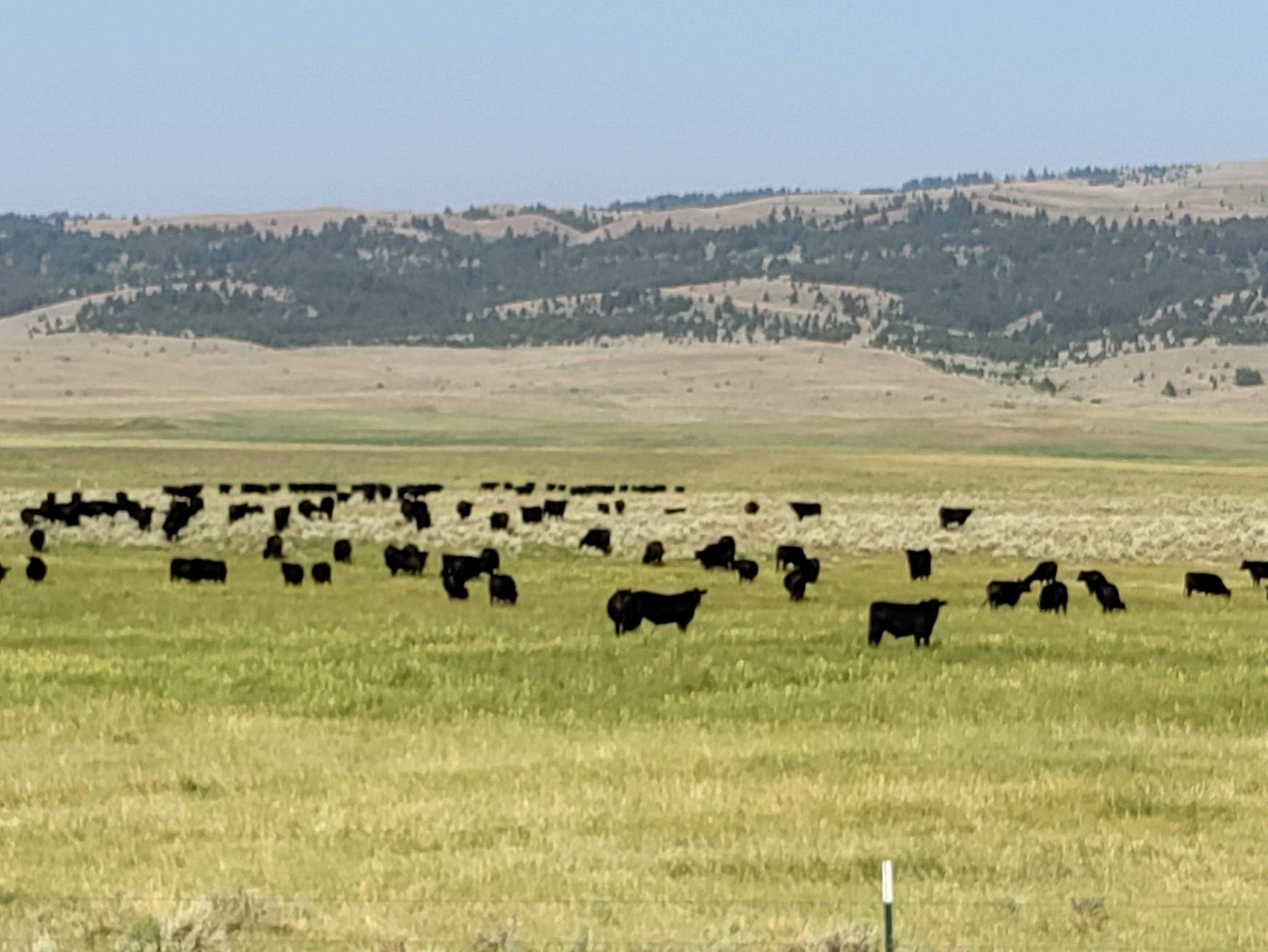
Many recent articles, TV commercials and even restaurant menus are promoting laboratory synthetic "beef." Typically laboratory synthetic "beef/meat" is promoted as plant-based and better for the environment. Is this really true? Just because it is plant-based does not mean it is better. There are contaminants in this synthetic plant-based meat like insecticides, miticides and fungicides. Will it be revealed what and how many chemicals are added to this proprietary synthetic laboratory meat to achieve the taste and texture of natural meat? These chemicals are not present in the free range grasses cattle consume.
Ranchers are incredible stewards of the environment. They maintain the ecological balance of cattle and wildlife. We all know the balance in nature is important. In that regard, wildlife does not live in synthetic meat laboratories. At the bedrock level, ranches and farms have been the foundation of this great nation. They continue to be the essential pillar of strength our country needs.
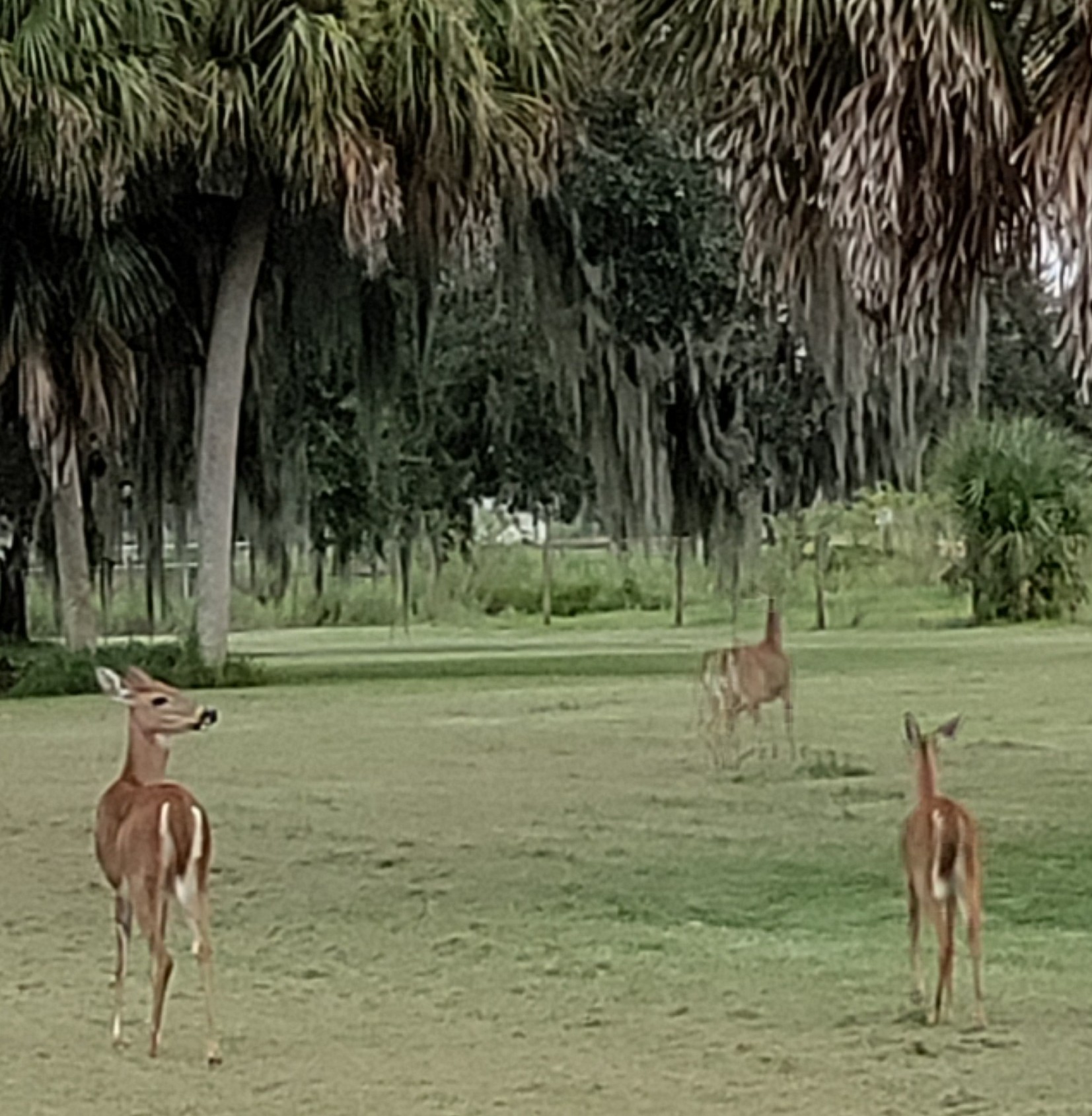
So, let’s compare two environments-grasslands and forests. It was previously explained these grasslands absorb more carbon than they produce. An acre of grass produces more oxygen than an acre of rain forest. The difference in carbon absorption is that grass has a short life span and turns carbon over quickly. Big trees live for years, storing carbon concentrated in their trunks and branches until they die and decompose, releasing their carbon back into the environment.
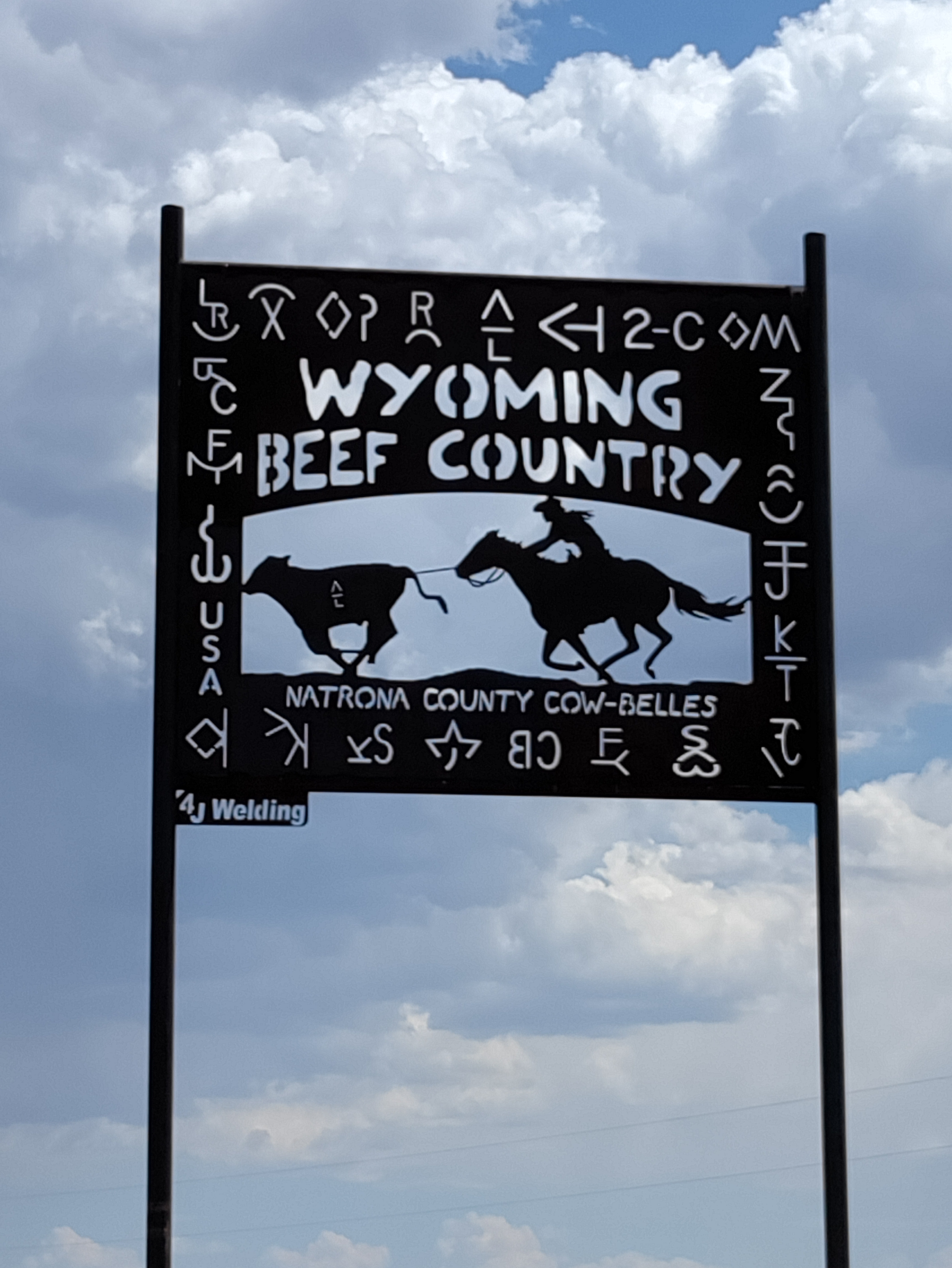
Why is the cattle industry the main focal point when many other industries have a more detrimental impact on the environment? How much energy is required to make this product? Are the facts about this laboratory constructed “beef” transparent to the general public? Can you make an informed decision about what is healthy for your body and for the environment when vital information is missing?
It is our intent to truthfully explore the dynamics of food production in an effort for you to make an informed decision about what you eat. In addition, we will shed light on an emerging agenda focused on changing the choice of what you have to eat. Think of agendas that started out small in the not distant past and have gained momentum taking over entire thought processes. With your help we investigate nutrition, food and food production on www.foodtruthamerica.info. If this is a concern for you like it is for me contact me at gmdaigneau@gmail.com. Memberships will be available soon.
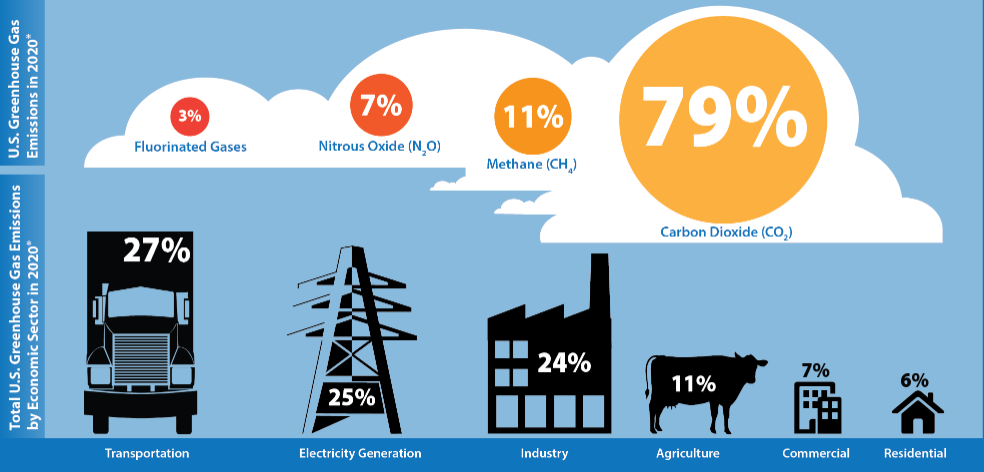
Only a cow is shown representing all of agriculture. Actually, it is estimated, the cattle industry represents less than 2%.
This shows the definitive cycle of Carbon.
